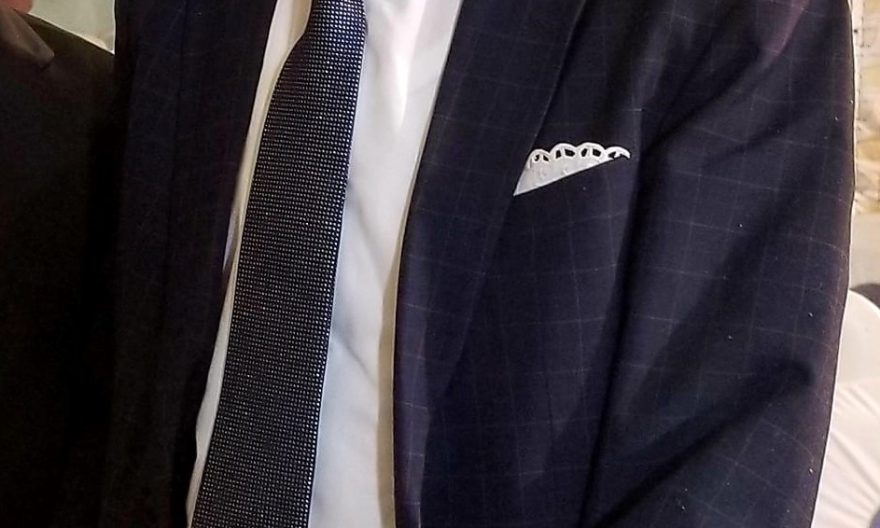
Isayas Hordofa was born on 2 February 1945 in Naqamt, East Welega Oromia State after his father Hordofa returned to his native place leaving his job as Imperial guard of Emperor Haile Selassie. When Isayas reached school age in 1949 he entered the Swedish Evangelical Missionary Primary School in Naqamt, where he attended class till he finished grade three. He attended grades 4-10 at Kadamawi Secondary School in Naqamt. Then he went to Comprehensive School in Naqamt in 1963 and attended 11th-12th grade. He became self-employed for a year as his school leaving national result did not qualify him for the then university admission meant for few for insufficient reason.
In 1966, he joined Asmara Teachers’ Training Institute and after a year-long training he got a certificate that let him a green light to be a teacher. Later, he studied crop production and protection technology at Hararge Agricultural College under the University of Finland and graduated with a diploma. After retiring, he graduated from “Lead Star Theological College” on 28 November 2019 with a bachelor’s degree. Isayas was assigned to one of the Primary School in Leqa Dullacha District, Jimma Arjoo province and Welaga Region. It was the era when the Ethiopian revolution erupted. A revolution that resulted in the resignation of Emperor Haile Selassie regime.
When the Derg regime came to power, Isayas was participating in different political activities in Ethiopia. He was trying his best to ensure the equality of nation and nationalities. At the time, he believed that the equality of ethnic groups will be respected or ensured in the Socialist system. He was able to advise and rally a lot of people behind the cause he was fighting for. In schools in the form of poems, he taught his students to stand up for the equality of the Oromo people preparing artistic pieces, he was presenting them for students who were arrayed for the Ethiopian flag hoisting ceremony. The students followed his example and wrote and read poems in Afaan Oromo. Deducting from his modest income he used to buy school supplies and encourage students to write and read poems in Afaan Oromo. When he was first assigned to teach sixth graders Social Studies he greeted his students in Afan Oromo“Attam bultan ijoollee?” (Good Morning Students). This was against the law of the Ethiopian education system, because at that time it was not allowed for a teacher to speak in Afaan Oromo in a classroom, for that was not a medium of Education. That incident was a strange one for students and the students were surprised and Isayas said, “Why are you taken aback? What is so strange?”
Considering the contemporary situation, Isayas Hordofa was the first to write poems in Oromifa and teach Oromifa hymns in the school. His initiative and actions were supported by the Oromo teachers, while the director and teachers of the school from other ethnic groups had a divergent view. So they accused Isayas of teaching students in Afaan Oromo contravening the Ministry of Education’s curriculum . In addition to Oromo hymns, he wrote scripts, stagedand performed in Afan Oromotheaters targeting parents and students. After a couple of years of teaching, he came to Addis Ababa in February and he was temporarily hired to work in the Afaan Oromo language program of Ethiopian Radio. After serving for a brief period he was transferred to the Ethiopian News Agency in August 1969 as the Reporter of the Ethiopian News Agency (ENA), Naqemt branch. In addition to his journalistic work he became the secretary of the state cultural committee. He continued encouraging local people to perform traditional dramas for the public. He was busy awakening the Oromo people to fight for their rights. The poems of the ensemble must be edited or more precisely censored by the state cultural committee before presentation to the target audiences. While censoring the poem, the committee excluded words that condemned the oppressive regime as well as those that emphasized ethnic groups’ equal entitlement of rights.
When Isayas took the stage to announce the next song, he was conveying the message of strengthening the sense of Oromomum and the struggle of the Oromo people for their rights. While working in this manner, the singers of the Welaga traditional theater club were arrested along with Isayas by the orders of the Derg government officials, for allegedly fomenting distress and awakening the people to erode the unity of Ethiopia”.
After this crisis, as per his request he was transferred to the ENA service office, Jimma in November 1970.After working there for about six months, in February 1971, he was transferred to Ethiopian Radio. In Harar, he became a member of the commission for organizing the Ethiopian Workers Party at the request of political officials in the state. Isayas was not interested in becoming a member of the party.
During his stay there he attended Haromaya Agricultural College in the evening program and graduated in November 1976 with a diploma in crop production and protection technology.
In 1972, he studied Journalism at the Institute of Journalists of the International Association of Journalists in Budapest. Isayas was transferred from Harar Radio to Ethiopian Radio in 1977 and served as the chief producer on Afaan Oromo on Ethiopian television.
The program in Afaan Oromo kick was started by Isayas Hordofa who first appeared to the audience and opened the program. Unique in the history of Ethiopian television Isayas has served from the level of host to Editor-in-chief. He especially launched a children’s program called, KOPI IJOOLE (Children’s program) . His stay on television was strongly influenced because of his firm stance for the cause of his people and his sensitive skin for his ethnic group disenfranchisement. As a result, his programs and news were edited (censored) with great suspicion. Isayas guests’ interviewed should be vetted for their political positions first.
Isayas has also written many novels in Oromifa. The first book he published was Hawi. His next book was yeron sifhadistu which means Time to Leave You.” It was self-published in 2000 In 2002, he published “ Yom lata “When Will,” in 2005, “Tsigerada and other short stories” and in 2008, “Alii Barkii Tuuchoo’, the hero of Oromo people.
He also wrote many books on Humanity and contributed Short Stories meant for anthologies with other writers for the Oromo Writers Association.
He wrote radio and television dramas and presented them to viewers and listeners. For instance he presented a drama called; Fozia a Radio Drama in 1976 presented by Harar radio and in 1979 presented by Ethiopian radio.
Wajin Duna (we die together) is a two-hour radio drama that was originally broadcasted in 1979 on Ethiopian Radio.This drama was the first in the history of Ethiopian radio drama in Afaan Oromo which later was adapted into a book and published in 1995.
“Dur Hafe”: One hour drama.18-minute short drama was broadcasted on Ethiopian Radio,
Warke koo “My Gold”: A1:15 hour drama.Kan cabaa tuffate agabuu bula ,
Wan facasan hamatu “They reap what they sow”: It’s an hour-long drama’ what goes around comes (to you) around. Yaachii Qani”: A 20-minute drama written in Amharic and presented to listeners on the first Saturday youth program of Ethiopian Radio.
BY NAOL GIRMA


